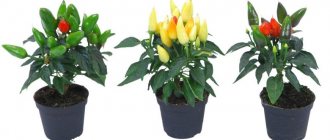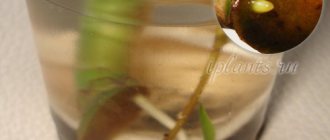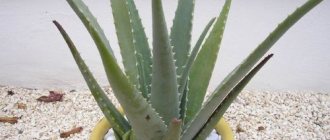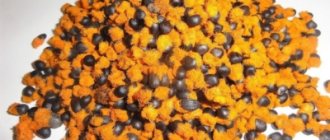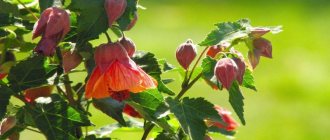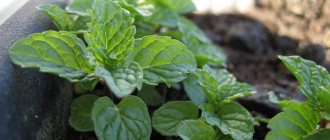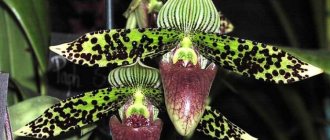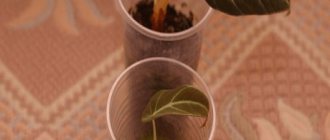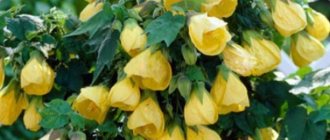Recently, there has been a fashion for using tropical plants in the interior, exterior, and clothing. I would like to introduce you to one of the brightest representatives of the tropics and subtropics - from Lat. Abutilon. It is also known as “Indoor maple” - so it is called for its leaves, which in their shape resemble maple leaves. And in India it is called “rope rope”, since its fibers make good rope rope and burlap.
1.Description 2.Home care 3.Diseases and pests 4.Planting and replanting 5.Pruning 6.Growing from seeds 7.Cuttings 8.Problems during cultivation 9.VarietiesPhoto: Abutilon is a beautiful tropical plant
Description of abutilone
Abutilon (rope plant) is an unpretentious plant. There are about 100 of its species. In nature it grows as a densely branching, rather large and voluminous shrub. The shape of the flowers resembles a large bell. Depending on the species, they can grow one or several flowers in a bunch.
Flowering lasts from April to November. Loves bright sunlight, but also grows quite well in some shade. Doesn't like drafts or cold air coming in from the window in the winter.
The optimal temperature for growing during the growing season is + 25 degrees. In winter, you need a lower temperature from + 12 to + 17 degrees and a fairly long daylight hours. It is best to place it on a south or west window, or provide additional illumination with a phytolamp. If the room temperature is less than +12 degrees, the plant will lose its leaves.
Photo: There are about 100 species of ropetail
Types and photos of abutilone
There are more than 150 varieties of this amazing plant in the world. In home floriculture there are several varieties, as well as hybrid forms of this plant.
Hybrid
This species was obtained as a result of selection by crossing several species. The result is a unique hybrid that combines all the advantages of the plant that contribute to the successful cultivation of abutilone at home.
The diameter of flowers of this type reaches 5 cm, and their color can be: yellow, orange, red, pink and white. Sometimes flowers have contrasting veins.
The bush is compact, well-branched and fast-growing. The foliage, depending on the variety, has a green or dark green tint. The shape of the leaves is not only carved, but heart-shaped and ovoid. There are garden subspecies with variegated foliage.
Bella mix series
They are distinguished by compact sizes up to 40 cm in height, large flowers of apricot, pink and yellow, the diameter of which reaches 8 cm. Diffused shade is preferred for this series. Sow seeds.
Large-flowered mix
The height of the plants reaches 60-80 cm and is distinguished by abundant flowering. The diameter of the flower is 4 cm, the color range is varied, among which there is a crimson color, which is quite rare. Also grown from seeds.
Juliet
The peculiarity of this variety is its rapid growth and abundant bunch flowering. The diameter of the flowers reaches 6 cm, in various shades. The height reaches 1.5 m; the plant requires spring pruning to form a compact bush. Propagated by seeds and cuttings, when propagated by seeds it retains all its species qualities.
Organza
It is a branched shrub up to 1 m tall, with large single flowers up to 10 cm. Requires regular formative pruning, remains decorative when propagated by seed.
Darwin
This variety was used in the breeding of hybrid flower varieties, resulting in a series with the same name Abutilon Darwin Hybrids. This variety is intended for cultivation in greenhouses or conservatories, because high air humidity is required.
The height of the plant reaches 3 m. The bush has spreading branches and leaves with a velvety surface of complex shape. The flowers are solitary, mostly orange. The flowering period is from April to October.
Abutilon Sello
It is a large shrub about 2 m, with straight shoots, light and variegated leaves. The flowers are cone-shaped, pinkish-orange in color with bright veins. It needs abundant watering and periodic spraying; with a lack of moisture, the leaves droop and lose turgor.
Abutilon spotted (variegated)
Belongs to the variegated varieties of this plant. It reaches a height of about 2 m. This variegation was acquired as a result of a previously transmitted virus. The shoots are short, soft, not lignified, bell-shaped flowers are formed one at a time on long peduncles.
They have an intricately colored corolla in red-yellow or red-orange shades, which is much longer than the calyx. The variety of this type can only be preserved by propagation by cuttings; otherwise, when sowing seeds, variegation may not appear. The flowering period occurs in August – September.
Amazonian
A shrub reaching a height of 1.5 m, having a large number of drooping shoots. This is why it got the name “weeping Chinese lantern”. The foliage has an unevenly carved edge with a dark or bright green color.
The red flowers, hanging singly, have a swollen calyx, in the middle of which there is a corolla of light cream petals. Provided proper lighting is provided, it can bloom all year round. A successful addition would be in the living room or hallway.
Abutilone grape leaf
This species is a shrub whose height reaches about 2 m. It has lavender or blue inflorescences, the diameter of the flowers reaches 5-10 cm, with a distinctive carved edge of the leaves. It is not suitable for home cultivation, it does not bloom, but if the climatic conditions are suitable for growing outdoors, it will certainly delight you with lush flowering.
Abutilone Indian
It is an annual herbaceous plant that thrives outdoors and at home. The flowers are small bells, mostly cream-colored, collected in inflorescences on long peduncles.
otsvetax.ru
Caring for abutilone at home
We also reduce spraying in winter, but do not stop. Since it is a tropical resident, it likes frequent and deep watering, as well as misting and showering, from late March to October.
- It will be ideal for the plant if you take it outside during the warm season. Choose a place where there is no strong wind or heavy rainfall (best near a wall or on the porch). If the location is chosen incorrectly, the plant may lose all its flowers, leaves, or even die.
- In winter, we reduce watering and water only after the top layer of the substrate has dried by 1 quarter.
- The flower loves high humidity, so it is best to place it near open water, if there is any in the winter garden or in the house.
- In winter, we place a container of water on the windowsill or place the pot in a tray with expanded clay, into which we periodically add water.
- During the flowering period, to care for indoor abutilon, we feed it 2 times a month with universal flower fertilizers.
- The dormant period is not pronounced, but an attentive gardener will notice from November to March that the plant slows down its growth and stops blooming.
Photo: Abutilone flowers resemble bells
Planting abutilone cuttings in the ground
Pour the prepared peat mixture for indoor flowers into a transparent plastic cup (200 grams), add perlite or vermiculite. This mixture can be poured with boiling water.
After the soil has cooled, place the cutting into it to a depth of 4 - 5 cm. Squeeze the soil around the cutting tightly with your finger. You must make several holes in the bottom of the glass with an awl or needle.
Diseases and pests
If watered incorrectly, root rot or leaves may dry out and fall off. The cable car can be attacked by:
- spider mite,
- thrips,
- scale insect,
- aphid,
- whitefly
| Observe the plant carefully and treat it promptly to avoid infecting neighboring flowers. |
Photo: Spider mites on the leaves of an indoor flower
Harm and benefits of Abutilone
Unlike most tropical plants that have become indoors, Abutilon does not contain poison.
Its leaves and stem contain no toxins that can harm humans. But it has some useful features and healing properties:
- wild-growing Abutilone is widely used to treat wounds and ulcers. An anti-cold remedy is prepared from it;
- the plant perfectly cures fever, and also calms the nervous system and normalizes sleep;
- the seeds are used to prepare a laxative, and the leaves are brewed and drunk as a diuretic tea;
- since ancient times, residents of tropical countries have made a remedy for malaria from Abutilon;
- the bark of the Abutilone tree is used to prepare an expectorant for coughs;
- Indians used it to treat hemorrhoids and fever, and used tea from the leaves for diabetes;
- The Chinese use a decoction of the leaves to treat tuberculosis, as well as swelling of internal organs;
- In order for newborns to cut their teeth painlessly, their gums are wiped with a strong decoction of the leaves;
- Some tribes in Brazil still fumigate children with the seeds of this plant. This way they rid them of worms.
Biologists who studied the plant came to the conclusion that it actually has medicinal properties and can cure some diseases. Anti-inflammatory and antimicrobial substances were discovered in the bark and leaves of Abutilone. This is an excellent natural anti-inflammatory, wound healing and pain reliever for adults and children.
In short, growing decorative maple will not be difficult. In gratitude, he will give you abundant year-round flowering, which will undoubtedly decorate the interior of your home.
rostok.guru
Planting and caring for abutilone
Most often, abutilon is grown in greenhouses, winter gardens and large premises. It is best to take soil for planting with a slightly acidic or neutral reaction.
__________________________________
It's quite easy to prepare it yourself:
Take 2 parts of leaf soil, 2 parts of humus (not fresh, but already lying around for 2-3 years) and 1 part of washed river sand.
__________________________________
Abutilone transplant
Young plants are replanted every year, the first 3–4 years, then every 2–3 years. Each time we take a pot a little larger in size than the previous one, about 2 cm.
If you plant this rope plant in a large pot, you will not get flowering. The small volume of the pot provokes abundant and long flowering.
Photo: Flowering rope plant
How to choose the time to plant abutilon
It is best to replant from February to April, when the plant is not yet actively growing. Transshipment can be carried out all year round, if you do not damage the roots and are careful enough. Be sure to add drainage to the bottom. We do not deepen the root collar.
How to form abutilon using pruning
- With good care, the shrub grows quite quickly. It becomes bulky and can take up a lot of space, which is so important for us in apartments. Timely pruning and shaping will help us here.
- Also, when the plant is thickened, the risk of various insects and diseases increases, which cannot be immediately detected by you, which is fraught.
- At the end of March, the bush needs to be cut back to half its height. This will stimulate the growth of new shoots. The bush will only become more beautiful and lush, there will be more flowers.
- During the summer, prune back new and weak shoots that are thickening the crown or growing inward. Over time, your cable car will need support.
Photo: Trimming abutilon at home
Abutilone hybrid A. hybridum
Most of the abutilons grown in gardens and on windowsills cannot be found in nature. These are numerous hybrids, often of unknown origin, which are today grouped under the name Abutilon hybridum. Due to the uncertainty of origin, such a formation is considered not a species, but an extensive varietal group.
Hybrid abutilons are compact, highly branched plants up to one and a half meters high. The leaves of this beautiful crop are heart-shaped or ovate, less often three- or five-fingered, serrated along the edge. The leaf blades on both sides are covered with short, hard hair, and their color can vary from light green or even yellowish to variegated.
Hybrid abutilon attracts attention with bell-shaped flowers located in the axils, singly or in pairs. Corollas with a diameter of up to 5 cm are held on thin drooping peduncles
The petals amaze with a variety of shades from deep burgundy to white.
Among abutilons of hybrid origin there are both shrubs and subshrubs, which at home require mandatory pruning and shaping.
Flower growers have a lot of interesting varieties and hybrids at their disposal, among the most popular is the Bella Select Mix series of hybrid abutilons, which includes plants with flowers of pale pink, pink, coral, white and pale yellow.
The photo shows abutilon Bella in a bright coral color with a lighter center of the corolla and deep pink edges of the petals. The foliage of such a plant is smooth, green, three- or five-lobed.
No less interesting is Abutilon Bella Yellow with dark shoots and yellow flowers that definitely will not go unnoticed.
Domestic breeders offer lovers of indoor plants abutilon Juliet with a height of up to 55–60 cm and large simple flowers of different shades. The plant is unpretentious and easily tolerates all the peculiarities of home maintenance. Another variety, Abutilon Organza, with flowers in white, golden, pink and rich carmine shades, has similar properties.
You can create a unique composition of plants with different flower colors if you purchase abutilone seeds in a mixture. In this case, plants of the same variety require a uniform approach to maintenance and care, and a lush multi-colored cap of bell flowers will appear above the pot.
One of the most famous hybrid abutilons is the White King variety, which forms compact bushes no more than 40 cm in height. The foliage on such plants is velvety, dark green or gray, the flowers are bell-shaped, completely white, with a yellow pistil and the same bright stamens.
Lovers of double flowers should pay attention to the hybrid abutilon variety Pink Swirls with soft pink corollas and light lobed foliage
Interestingly, among the abutilones, there are also decorative foliage varieties
The flowering of the abutilon variety Souvenir de Bonn shown in the photo can be called mediocre compared to previous plants, but its leaves will clearly attract attention. A subshrub about half a meter high, densely covered with five-fingered pointed leaves
The leaf blade is dark green, with streaked veins and a bright white edging along the edge.
How to propagate abutilon using seeds, cuttings and what care is needed for it
There are 2 ways to propagate Abutilon: seed and cuttings.
Growing abutilone from seeds
- I sow in early spring, in plastic cups.
- The soil mixture for sowing should be loose and nutritious. It’s good if it consists of peat, sand, perlite and a small part of nutrient soil.
- Before sowing, I treat the seeds in a weak solution of potassium permanganate.
- Before sowing, I water the soil generously with settled water at room temperature.
- I bury it 0.5 cm into the ground.
- I cover the top of the cups with glass or stretch film. You can place each cup in a plastic bag and tie it on top.
- I put it in a warm, bright place. The optimal temperature is from + 15 to 20 degrees.
- Every day you need to ventilate and, as the top layer of soil dries, spray it with a spray bottle. The soil should always be kept moist, but do not overdo it so that there are no puddles or slurry, otherwise the seeds may rot or become moldy.
In 3 weeks shoots will appear. As soon as you see that the seeds have hatched, start ventilating more often and after 3 days, remove the greenhouse. Otherwise, a black leg may develop or the plants will sprout.
__________________________________
When grown from seeds, not all varieties will retain their parental characteristics. For example, variegated forms will have regular green leaves. For such species, propagation by cuttings is ideal.
__________________________________
Photo: Growing rope plant from seeds
Flower cuttings
The best time to take cuttings is spring. During pruning, you can prepare many cuttings for yourself. It is best to choose young, green tips of shoots, 10–14 cm long.
- We leave 3 leaves on the cuttings, carefully break out the rest or cut them off with disinfected scissors.
- We also remove all buds and flowers.
- If the leaves are large, then some can be cut in half.
- We make the lower cut at an angle and dip it into the root. If there is no root, then we plant without it.
- The soil mixture is made up of peat, perlite and sand in equal proportions.
- We spill the soil with water before planting.
- We bury the cutting to a depth of 0.5–1 cm.
- We make a greenhouse from a plastic container or plastic bag.
- Place in a bright, warm place with a temperature of + 20 to + 24 degrees.
- Ventilate and spray with a spray bottle daily.
And all that remains is to wait and watch. When you notice that the cuttings have begun to grow and have constant and good turgor, it means that rooting has occurred and you can transplant them into larger pots.
Photo: Cuttings of abutilone
How to root cuttings of abutilone in water
You can also root cuttings in water, but you need the ambient temperature to be from + 20 to + 25 degrees for a month.
Preparing abutilon cuttings for planting in the ground
We remove the lower two leaves of the cutting, simply tear it off or cut it with a knife.
Now the abutilone cuttings are ready for rooting in the ground.
To disinfect a cutting cutting from infection, you can sprinkle it with crushed ash.
It is also a stimulator of root growth.
Problems when growing: why abutilon dries and turns yellow
It happens that this representative of the flora sheds leaves, buds and flowers. This may happen:
- due to improper watering: excessive or, conversely, from drying out of the earthen coma,
- due to sudden temperature changes,
- due to cold drafts.
How to care for abutilone
- The tips of the leaves dry out from lack of moisture in the air. In extreme heat, the plant must be sprayed and watered intensively. When spraying, try not to get it on the flowers, as this will cause them to fade faster and possibly rot.
- Leaves become faded due to lack of light and beneficial microelements. You need to move the plant to a brighter place, water it well, and then feed it with complex fertilizer.
Photo: When growing rope plant, you need to monitor watering, lighting and temperature
Agricultural technology of indoor maple
The plant loves diffused light, as under the canopy of trees, but tolerates direct sunlight for no more than 2 hours a day. It doesn't have to be scorching midday light.
For planting you need fertile, light soil. It can be composed of equal parts:
- peat;
- leaf humus;
- turf land;
- sand and vermiculite.
You need to add crushed coal to the soil. You can take ready-made soil for seedlings of garden crops, but add perlite, sand, vermiculite and charcoal. Drainage is made of expanded clay, pebbles or crushed pine bark. The pot must match the size of the root system.
The air temperature in summer is up to 25, in winter the maximum is 15, but it is dangerous to keep at this temperature for a long time; root rot will appear. An air humidity of 60% is quite sufficient, but the plant creates the necessary microclimate around itself independently, without spraying. Watering indoor abutilon should be systematic. The lump of earth is always kept moist, without stagnation of water.
It should be noted that watering is carried out with soft water without residual chlorine; sometimes it is advisable to acidify it in order to maintain the soil pH below 7 units. Fertilizers are applied twice a month after heavy watering, only during the growing season. In winter, if the plant has gone dormant, only monitor the lump of earth, which should be moderately moist.
The plant loves showers and wiping the leaves with a damp cloth. It does not react at all to spraying; in summer, due to water droplets focused on the leaves, it can get burned.
The plant does not like frequent transplants and drafts. Indoor abutilon is sensitive to changing place of residence. At the same time, he gratefully accepts proper care and pleases with his rapid growth and flowering.
Natural and garden varieties
To ensure that your collection blooms all year round, you need to choose the right varieties.
| Tip: if you want to make an unusual gift for a gardener, you can try grafting one variety onto another. For example, graft a twig with red flowers onto a variety with yellow flowers. |
You can also play with different shades of foliage. Plant a variegated form on a variety with uniformly colored leaves. Such a gift will be a real decoration for any interior and home plant collection.
Abutilone hybrid
It has many varieties that are distinguished by long flowering, many different colors and shades. They can be red, golden, white. Outwardly they resemble bells, as they are lowered down. The original shape distinguishes this species from others. It grows up to 1.5 meters in height. All branches are covered with brown-brown bark. The leaves are shaped like maple leaves.
Photo: Abutilone hybrid
Abutilon Sello
It grows up to 2 meters in height. You can see fine fluff on the stems. Blooms from July to December.
Photo: Abutilon Sello
Abutilone variegated
Most often it is planted in a hanging pot and grown as an hanging plant. You can put a support and then he will wrap around it. The leaves have a variegated color.
Photo: Abutilone variegated
Brief information about abutilone
Indoor mint - how to plant and care
Abutilon indoor maple is one of the desired and favorite houseplants of most flower lovers. The abutilon flower has a large number of variations and varieties; it is related to the mallow and came to us from Brazil. Coming from the forest zone of the South American continent, this truly international representative of the genus of evergreen herbs, shrubs, subshrubs, took root in the Victorian era in the British Isles, has a majestic name of Arabic origin, which means “shade-giving.”
An undemanding, unpretentious plant, as well as enchantingly and continuously attracting attention, pleasing the eye with its beautiful almost year-round flowering, it has many names - rope plant, Chinese lantern, Indian mallow, indoor maple. More than a hundred variants of abutilones live in the natural environment
They are small trees or shrubs. Abutilon varieties can be recognized by the color of the leaves, which can be multifaceted: some are green, others are predominantly spotted-golden or variegated, bright. Kanatnik has bell-shaped flowers with a large number of stamens and an oblong pistil; there are double and simple and very bright petals of different colors: yellow, white, red, pink, orange, burgundy with original light and dark veins. Ropeweed - this plant received such a nickname for preparing bast fiber from its stems, which is used to make ropes, burlap, and tarpaulins. Chinese industry uses the seeds of certain types of abutilone to prepare technical oils
More than a hundred variants of abutilones live in the natural environment. They are small trees or shrubs. Abutilon varieties can be recognized by the color of the leaves, which can be multifaceted: some are green, others are predominantly spotted-golden or variegated, bright. Kanatnik has bell-shaped flowers with a large number of stamens and an oblong pistil; there are double and simple and very bright petals of different colors: yellow, white, red, pink, orange, burgundy with original light and dark veins. Ropeweed - this plant received such a nickname for preparing bast fiber from its stems, which is used to make ropes, burlap, and tarpaulins. Chinese industry uses the seeds of certain types of abutilone to prepare technical oils.
Medicinal properties and contraindications
Abutilone is a plant that gives joy. A sad mood transforms into a powerful charge of vigor; helps to reveal talents, creates an atmosphere of love and harmony. Contemplation of a flowering tree relieves stress. The type Abutilon Theophrastus is useful. Its juice is used to treat furunculosis and heal wounds. Strong ropes are made from abutilon branches. For this he is called a ropeman.
Abutilon is a tropical plant that does not contain toxic substances that are harmful to humans. Some varieties even purify air masses. Where the flower grows, there are no diseases, and the air is clean and fresh.
For your information! Theophrastus variety is used as a wound healing agent and helps in the treatment of furunculosis.
Growing errors
Experts advise growing mainly hybrid varieties of abutilone at home. They are hardy, compact and do not create any special problems for their owners. But there is
Typical mistakes when growing indoor maples:
- The pot size is not suitable. The plant must be constantly replanted into a larger container. Otherwise, it will begin to slow down its development and get sick. If the roots are visible from the drainage holes and the flowers become smaller, the abutilon needs to be replanted urgently. Each subsequent pot should be approximately 2 cm larger than the previous one. Perennials that live more than 8 years have to be grown in tubs.
- The plant does not bloom. The reasons may be different - perhaps pruning was missed or not done at all. Also, the lack of flowers may be due to a lack of light.
- The leaves are turning yellow. A common cause is stagnation of water in the pan. It is necessary to pour it out an hour after watering.
Abitulon is ideal for home and greenhouse cultivation. If you provide it with timely care, moderation in heat and humidity, and then it will delight its owners with long and lush flowering.
Possible care problems
A beautiful flower attracts the attention of others. Only an experienced gardener can notice the first subtle signs that the plant is uncomfortable. Then an attentive owner will instantly find the cause and try to eliminate it. But every action, even a quick one, will produce results in 2 weeks. Therefore, when caring for a plant, you need to be patient. It would be good to keep a diary of fertilizing, inspections and treatments.
Clear signs of disaster will be:
On this topic:
BACK
FORWARD
1 of 39
- abutilon leaves turn yellow and fall off;
- leaves dry;
- buds are dropped;
- flower growth stops.
All these troubles can arise for two reasons - the conditions of detention have changed and become unacceptable, the plant has been colonized by insect pests.
The most common cause is a change in leaf color. Let's look at the reasons in more detail. The leaf is green due to the formation of chlorophyll through photosynthesis. There are many complex components involved in the process. If abutilon leaves turn pale and yellow, the root cause may be a lack of light. It is necessary to move the plant into the light, but gradually accustom it to the change, shading it at first. At the same time, it should be taken into account that direct sunlight can promote fading and remove the variegation of leaves.
The same sign of pale leaves will be a spider mite, which, settling on a tender leaf from below, very quickly multiplies in a cradle of barely visible cobwebs and sucks the juices out of the plant. If you don't fight, the abutilon will lose its leaves. The insecticide Fitoverm, treated once a week, is the most suitable enzyme preparation in indoor conditions. Three treatments in a row, then monitoring the condition.
Drying leaf tips indicate a lack of moisture; you need to increase watering. Perhaps the air in the room is too dry, then you need to throw a damp cloth over the radiator, which will lower the temperature and increase the humidity.
With a draft and a sharp drop in temperature, abutilon inevitably loses its leaves. But this will also happen when the earth clod dries out or the plant floods. The roots should not bathe in stagnant water. Therefore, after watering, the water from the pan is drained an hour later. If in the light the leaves of abutilon curl up and turn yellow, the plant requires shading.
A signal of trouble with the root system will be drooping leaves in wet soil when the temperature has not changed. Yellowing of leaves and leaf fall indicate the time of root revision. However, if in winter the leaves of abutilon turn yellow and fall off, the branches are exposed, it may be time for dormancy, it depends on the variety. A dormant bush is not fed or pruned until spring.
Yellowing of abutilon foliage is associated with many factors. One of them is lack of nutrition. The pattern on the leaves will tell you about the element that the plant lacks:
- iron is determined by yellowing between the vessels;
- magnesium will create a frame at the edges;
- zinc will be found in spots on old leaves;
- nitrogen and sulfur will create yellowing with prominent veins.
An indicator of iron deficiency will be the young upper leaves, in which the veins are green and the yellowness is spreading. If you do not help the plant, the next leaves will come out very pale. It is best to apply foliar fertilizing with Ferrovit.
Magnesium deficiency is indicated by scorched edges or chlorosis of older lower leaves. Magnesium is redistributed in the plant in favor of young leaves and buds. If you do not feed the plant with soluble magnesium salt, the leaves turn up and become curly, the edges dry out. Magnesium sulfate must be present in feeding mixtures.
Starvation caused by a lack of nitrogen fertilizer and sulfur look almost the same. General yellowing and shredding of the leaves, weak growth of the bush or its absence indicates a lack of nutrition, especially since this indoor plant loves natural extracts from organic fertilizers.
To the question: abutilone does not grow, what should I do? – the answer lies in a complete analysis of the situation. If the root system is healthy, the lump of earth is sufficient for the development of the plant and the time of rest has not come, then it is necessary to feed the plant.
However, in each specific case, assistance is required from the advice of an experienced gardener, especially if the abutilon sheds buds, leaves and stands bare. It’s a good idea to know its variety when purchasing a flower, then you can read about its biological characteristics in reference literature.
Landing
After purchase, it is recommended to transplant the plant into a new pot. First, the rope climber needs to go through an adaptation period. It is enough to wait 10-14 days. This is the period when the flower gets used to new conditions: temperature, humidity and lighting.
After this, you can start transplanting. There must be holes in the bottom of the pot to drain excess moisture into the tray. This will help prevent overflow.
Please note! You can use a ceramic pot, since the porosity of the clay removes excess moisture and provides gas exchange to the root system.
Drainage is placed at the bottom of the pot (expanded clay or shards obtained from a broken old clay pot). Drainage removes excess water from the roots and forms an air layer that protects the roots from rotting. The size of the pot is chosen depending on the size of the plant. A pot that is too large can cause root rot, while a pot that is too small can cause the plant to grow slower. Since the rope plant grows quickly, a young plant needs to be replanted once a year. Mature plants are replanted as needed. It is recommended to increase the diameter of the pot by 1.5 cm.
Soil requirements:
- It is better to purchase primer for abutilone in a specialized store.
- A suitable composition for flowering plants will have a high percentage of humus content.
- It is recommended to add a little sand to it.
It is advisable to sterilize the soil before use to protect the plant from infection by pests. A convenient method is sterilization in the oven: the soil is placed on a baking sheet and placed in the oven for 40-60 minutes at a temperature of 80 o.
Appearance
The height of indoor maples depends on the type and variety of the plant. But they have botanical features that are common to all varieties.
Characteristic external signs:
- Flowers are formed on elongated stalks - at the ends of the shoots, in the axils of the leaves. Moreover, the growth of the latter continues after the flowers appear. The flowers reach 4-8 cm in diameter and can be smooth or double. The shape of the buds is different - funnel-shaped, bell-shaped, flat-round. The petals have pronounced veins.
- The leaves reach a length of 10-20 cm. They are colored green, but can also have white spots. The leaves are three or five-lobed, the edges are grooved. Shape: ovoid or elongated oval.
- The stems are flexible, well branched, and purple-brown in color. Covered with fine bristles. When grown at home, they reach 1.5-3 m.
The plant, having large leaves that evaporate moisture well, becomes an active air humidifier. It is recommended to plant the rope in dry rooms - it will increase the humidity in them.
Abutilone dwarf Bella: botanical characteristics
Many flower growers believe that Bella abutilon is a varietal variety of flower. In a sense, they are right, but Bella is not one of the species, it represents a whole series of hybrid varieties that share common characteristics.
- Miniature abutilones, united in the Bella varietal group, have the following distinctive features:
- plant height, as a rule, is no more than 30 cm;
- due to small internodes, miniature abutilons form a lush, highly branched crown;
- flowering is long, very abundant, some varieties bloom so many flowers that their branches may even require support;
- The flowers of the Bella family are wheel-shaped and wide open.
The main difference between indoor maples of this family and other hybrid varieties is precisely their dwarfism
When choosing a plant, you should first pay attention to the size of the bush. The color and shape of flowers and leaves may well correspond to the varietal group, but if the plant is quite tall and has few side shoots, it is most likely not Bella
